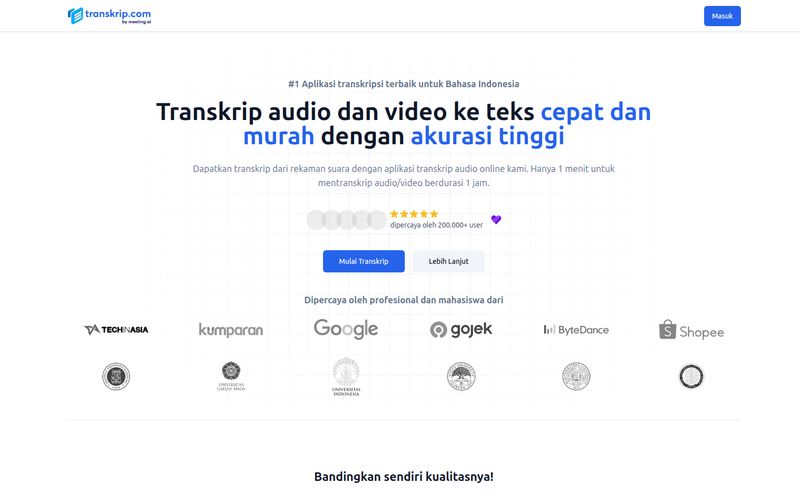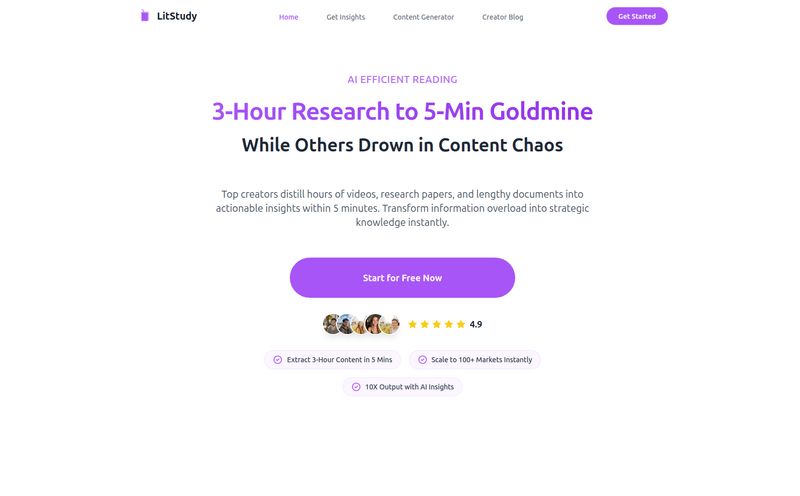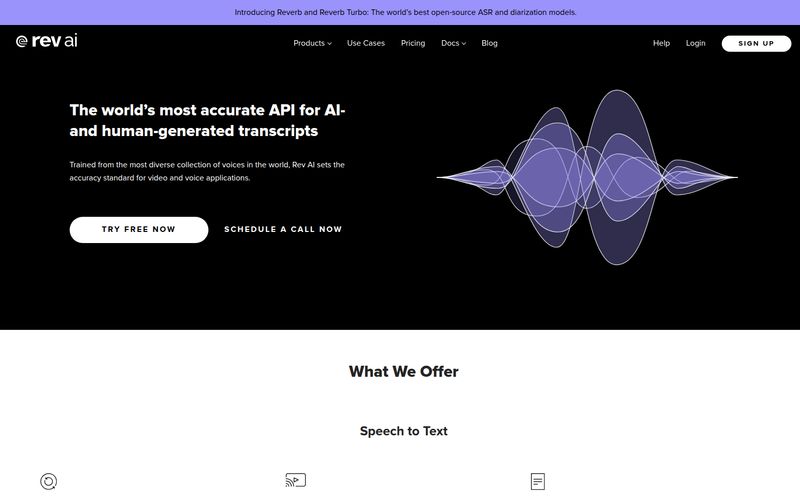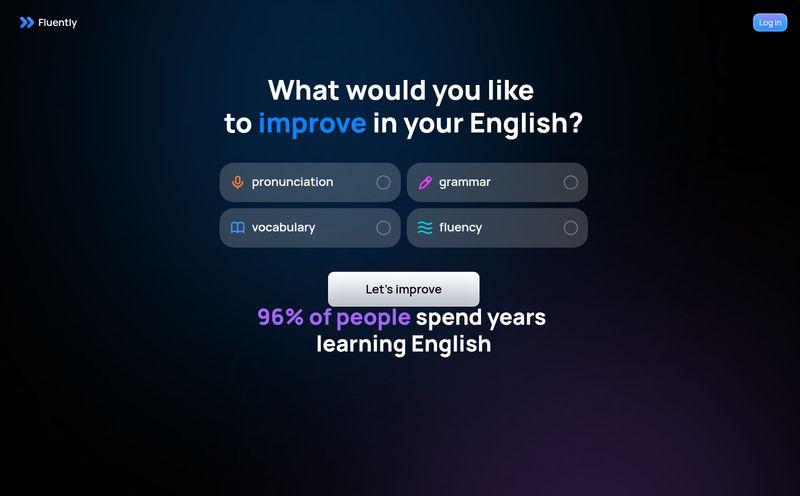No, really. Let's talk about talking. Specifically, talking to our computers. As someone who spends… let's just say a 'significant' portion of my day with my hands glued to a keyboard, the idea of a simple, no-fuss voice dictation tool is more than just appealing. It’s the holy grail.
My wrists sometimes feel like they've run a marathon by 3 PM. And my brain? It often moves faster than my fingers can fly across the QWERTY layout. So when I stumbled across a name like TaterTalk, I was intrigued. It sounds friendly, unpretentious. Like a tool that’s not going to ask for my life story and a monthly subscription before I can even type a sentence. The promise was simple: "The easiest way to talk to your computer."
Sign. Me. Up. But then, the plot thickened. The digital breadcrumb trail went cold. More on that little mystery in a bit.
So, What Exactly is TaterTalk Supposed to Be?
From the whispers I could gather across the web, TaterTalk isn’t trying to be some all-encompassing AI overlord. And thank goodness for that. Its mission is refreshingly straightforward: to be a web-based tool that lets you dictate text and control your computer with your voice. That’s it. No complicated installations, no 100-page manuals. You talk, it types. Simple as.
Think of it as a digital scribe, ready to take down your brilliant ideas, your lengthy emails, or that novel you've been meaning to start, all while you lean back with your hands behind your head. In a world saturated with feature-heavy software, a tool that champions simplicity is a breath of fresh air.
The Core Features: Less is More
TaterTalk seems to be built on two main pillars, and frankly, they’re the only two that really matter for a tool like this.
Effortless Voice Dictation
This is the main event. The ability to speak and have your words appear on screen. This isn't new technology, of course. Google Docs has it, Windows has it. But the experience is often clunky. The promise of TaterTalk is an interface so easy, it becomes second nature. It aims to remove the friction between your thoughts and the written word.
The 'Auto-Listen' Advantage
Now this is what really caught my eye. The auto-listen feature. If you’ve ever used other dictation tools, you know the dance. You speak a sentence. You click the microphone icon off. You think. You click the icon on. You speak again. It's a constant start-stop that can totally break your creative flow. Auto-listen suggests a more fluid experience, where the tool is just… listening. Ready for your next command or paragraph without you having to constantly toggle it on and off. For anyone in a creative or productivity-focused role, this is a game-changer.

Visit TaterTalk
The Good, The Bad, and The... Missing?
Every tool has its trade-offs. Based on the specs, here's how TaterTalk shakes out, at least in theory.
What We Like (Theoretically)
The biggest pro is its supposed ease of use and hands-free nature. The combination of simple dictation and that auto-listen function could genuinely boost productivity and, more importantly, offer a fantastic accessibility solution for those who find typing difficult or impossible. It’s a tool built on a foundation of pure utility.
Potential Hiccups and Head-Scratchers
One potential drawback is that it might require Google Chrome to work best. This isn't a huge surprise; many web-based voice tools rely on Chrome’s Web Speech API, which is one of the most robust out there. So, if you're a die-hard Firefox or Safari user, you might be out of luck. A minor issue for most, but still a hurdle.
The other con is a big one, and it ties into our central mystery: a severe lack of information on advanced features or customization. Which brings me to...
The Great TaterTalk Disappearance
Alright, so here’s the story. I got the name, I got the concept, I was ready to give it a spin. I navigated to where the site should be and was met with... a 404. A “Page not found” error from Netlify, to be exact. The digital equivalent of a vacant lot where a promising new shop was supposed to open.
What does this mean? Is it a ghost? An abandoned project? A tool in super-secret stealth mode that I wasn't meant to find yet? Honestly, I dont know, but it’s fascinating. It turns this from a simple tool review into a bit of an internet investigation. It’s a stark reminder that in the fast-moving tech world, brilliant ideas can appear and vanish in the blink of an eye.
I’ve seen this before. A developer builds a cool side-project, it gets a little buzz, and then life gets in the way. Or maybe they’re re-tooling for a big launch. Whatever the reason, TaterTalk is currently playing hide-and-seek.
What About Pricing? The Million-Dollar (or Free?) Question
As you can probably guess, with a missing website comes missing pricing information. There’s no pricing page, no subscription model, nothing. This leaves us to speculate.
Could it be free? Many great tools start as free, passion projects. It could also be a freemium model, where basic dictation is free and advanced features (if they exist) are behind a paywall. This is a common strategy to build a user base. Without the site, its impossible to tell. It's a bit frustrating, but also adds to the allure. Who doesn't love a potentially powerful free tool?
The Verdict on a Digital Ghost
So, what’s the final word on TaterTalk? It’s an enigma. It’s a fantastic idea wrapped in a mystery. The concept of a dead-simple, web-based dictation tool with an 'auto-listen' feature is incredibly compelling. It’s something I, and many others, would use daily.
But for now, it remains just an idea, a ghost in the machine. I’m holding out hope that it’s just a temporary glitch or a prelude to a proper launch. A tool with a name as charming as TaterTalk deserves to see the light of day.
I'll be keeping my ear to the ground for this one. If it ever does pop up, you can bet I’ll be first in line to try it out. And if you’ve seen TaterTalk in the wild or have any inside info, drop a comment below. The mystery must be solved!
Frequently Asked Questions About TaterTalk
- What is TaterTalk?
- TaterTalk is designed to be a simple, web-based platform that allows you to dictate text and control your computer using your voice, aiming to be the easiest tool of its kind.
- How would the auto-listen feature work?
- The auto-listen feature would likely allow for continuous voice dictation without needing to repeatedly click a microphone icon, enabling a more natural and uninterrupted workflow.
- Is TaterTalk free to use?
- Currently, there is no available information on pricing. The tool could be free, follow a freemium model, or be a paid service, but its current unavailability makes it impossible to confirm.
- Why can't I access the TaterTalk website?
- The website currently displays a "Page not found" error. This could be due to several reasons, such as the project being temporarily offline, under development, or discontinued.
- What are some good alternatives to TaterTalk?
- While we wait for TaterTalk, you can try the built-in voice typing in Google Docs, Windows Voice Recognition, or macOS Dictation. For more advanced transcription, services like Otter.ai are also popular.
- Does TaterTalk work on any browser?
- It is suggested that TaterTalk may require Google Chrome for optimal performance, likely to take advantage of its robust Web Speech API. Performance in other browsers like Firefox or Safari is uncertain.
Conclusion
The story of TaterTalk is a perfect snapshot of the tech world: full of brilliant promise and occasional, baffling mysteries. The need for a simple, effective voice dictation tool is real, and the concept behind TaterTalk hits the nail on the head. While it may be a digital ghost for now, the idea itself is very much alive. Here’s hoping we all get to talk to the 'Tater' soon.
Reference and Sources
- For information on the underlying technology: MDN Web Docs - Web Speech API
- Popular alternative mentioned: Otter.ai
- (Presumed) TaterTalk Website (Currently Inactive): `tatertalk.com`



